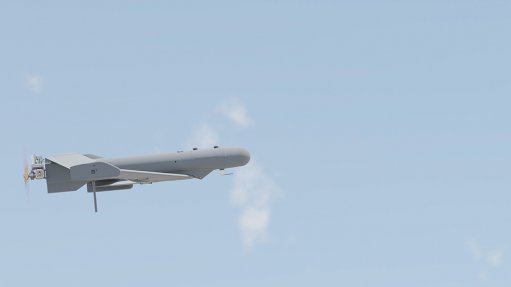
DRONE TECHNOLOGY Drone applications are diverse, with widespread acceptance of drone applications in surveying, photography, entertainment, the military and policing applications, Connolly points out
Despite the drones and defence sectors being adversely affected by the Covid-19 pandemic in terms of the global slowdown it triggered, global aerospace and technology company Paramount Advanced Technologies is optimistic about the future.
There is still significant demand for solutions and products, which will continue to drive sustainable profitability if approached correctly, says Paramount Advanced Technologies CEO Lee Connolly.
Paramount Advanced Technology has a heritage of innovation regarding unmanned aerial vehicles (UAVs).
“Our product offerings included the Mwewe, RoadRunner, Civet and Vulture. Paramount Advanced Technologies’ initial systems were first deployed over two decades ago, and the company currently offers a broad spectrum of UAV solutions, from small, short-range UAVs to the medium-altitude, long-endurance UAVs and specialised UAVs,” explains Connolly.
The company has managed to retain its core capability and build on the heritage of innovative solutions during these difficult trading conditions, consequently leaving it well placed to take advantage of the anticipated pent-up demand as the markets begin to open.
By all accounts, the prospects for the drone market look promising, with some estimates indicating that the global drone market is poised to grow by $21.01-billion from 2021 to 2025, progressing at a compound annual growth rate of 14.42% during the forecast period, explains Connolly.
“We are experiencing robust growth in demand for policing applications, border management applications and specialised military drones, so our experience matches the market analysis predictions.”
Drone applications are diverse, with widespread acceptance of drone applications in surveying, photography, entertainment, the military and policing applications, Connolly points out.
Current areas that are being developed include smart agriculture, conservation, delivery, disaster mitigation and relief, logistics and even the transporting of people.
Not all these areas may result in successful products, but the spin-offs of even failed product development could lead to other product areas being explored.
Moreover, new drone technology can have a great effect on modern warfare, as witnessed in the initial effects of the application of drones in the latest conflicts.
In the recent conflict in Azerbaijan, niche military drones provided a glimpse of the future of warfare on the battlefield of Nagorno-Karabakh, where the purpose-built military drones proved their utility against soldiers, tanks, artillery and air defence systems, Connolly elaborates.
“These drones were so effective that the consensus is that they swung the advantage heavily in favour of Azerbaijan,” he adds.
In the current conflict between Russia and Ukraine, the latter has been accredited with destroying Russian military hardware using similar drones.
“So, it very much appears that the future role of drones has already begun,” he adds.
Specialised military drone applications, therefore, enable a country to gain significant airpower capability at a fraction of the cost of maintaining a conventional airforce capability.
Drone hardware is also relatively cheap.